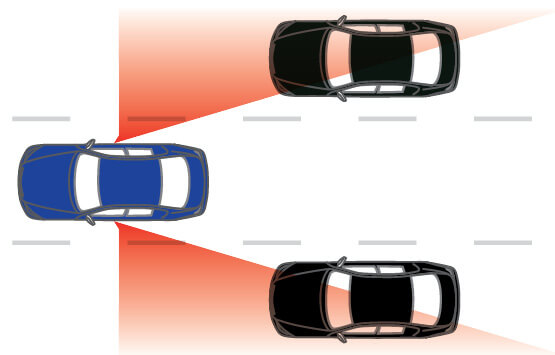1- Before You Start the Engine
Goal: Teach your teen vehicle basics before actual driving begins.
Location: Parked. This is a non-driving lesson.
Lesson one – touring the vehicle
Walk around the outside of the car with your teen. Instruct them to look for leaks and hazards such as broken glass, and to make sure it’s clear behind the vehicle as well as in front of the vehicle.
Have your teen practice these basic skills until they don’t need help:
- Starting and stopping the engine
- Naming and operating all dashboard and steering wheel controls
- Checking oil level
- Checking wiper fluid
- Checking tire pressure
- Checking tire tread depth
Lesson two – mirror settings

Adjust tilt to have the horizon appear in the center of the mirror. And, adjust the viewing angle to see a slight amount of the vehicle, which is essential to detect other traffic.
No matter how the mirrors are adjusted, there are areas that still cannot be seen, requiring drivers to turn their heads to check prior to making a move to the left or right.
- Inside mirror: Have your teen sit up straight in the driver’s seat and adjust the inside mirror so that it frames the entire rear window. This is the main mirror for viewing what is behind the vehicle.
- Left and right outside rearview mirrors: Adjust the left and right outside rearview mirrors so they show a slight amount of the sides of the vehicle when the student is sitting in an upright position.
Lesson three – checking blind spots

The most effective way to deal with blind spots is to briefly turn and look.
Additionally, teach your teen how to look over their shoulder to check the blind spot on each side of the car that cannot be seen in the mirrors. Blind spots should be checked every time you change lanes.
Lesson four – seating position
The proper seat position is important to safely control the vehicle. Your teen should sit with their back firmly against the seat. There should be at least 10 inches between the steering wheel and the driver’s chest, with the air bag pointing at the chest. The top of the steering wheel should be no higher than the shoulders. Move the seat forward or backward so that the driver’s heel touches the floor and can pivot quickly between the brake and accelerator. In an automatic car, the left foot should be off to the left on the dead pedal and out of the way. Left foot braking is not recommended. Shorter drivers may need a seat cushion or pedal extenders to safely sit 10 inches from the air bag. The head restraint should be at the center of the driver’s head.